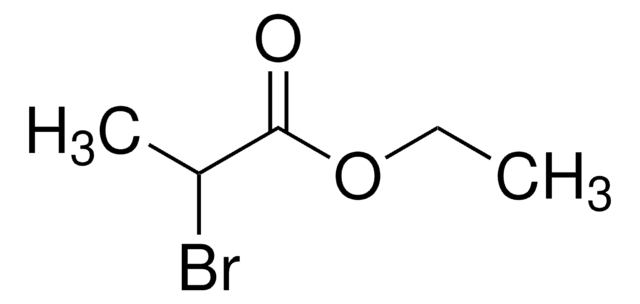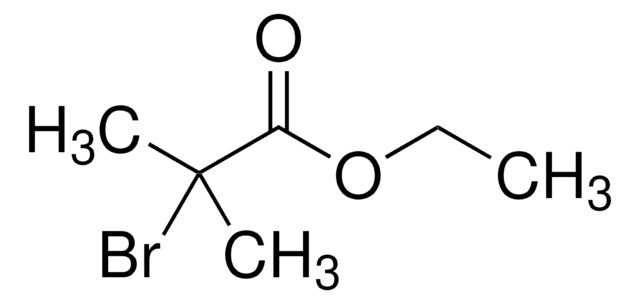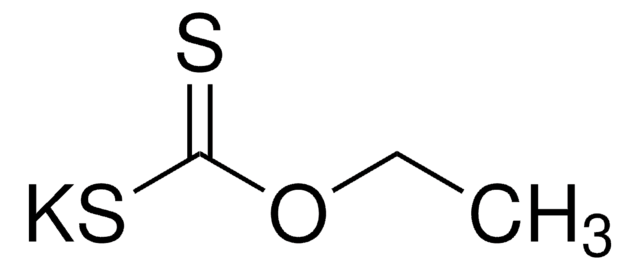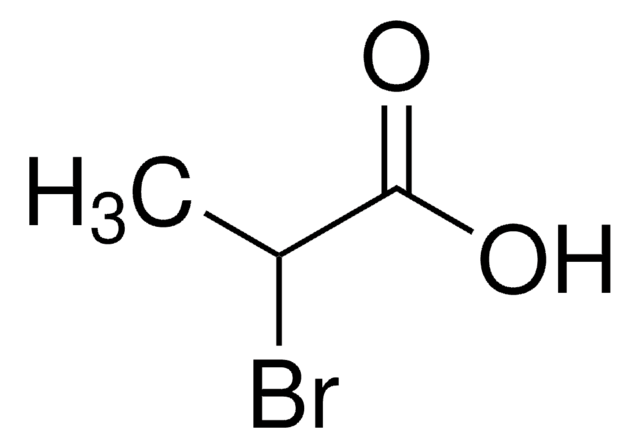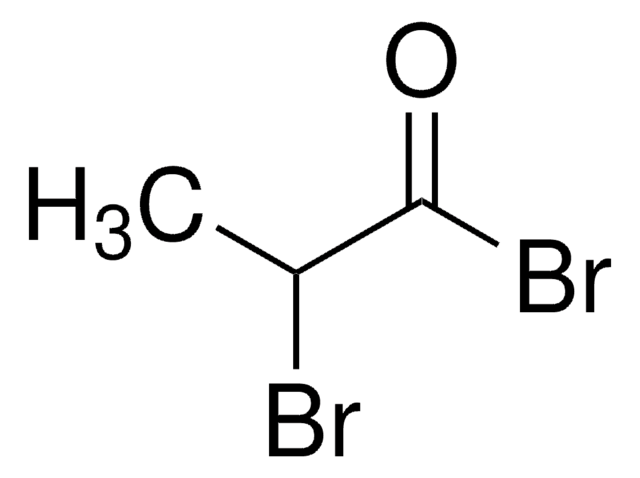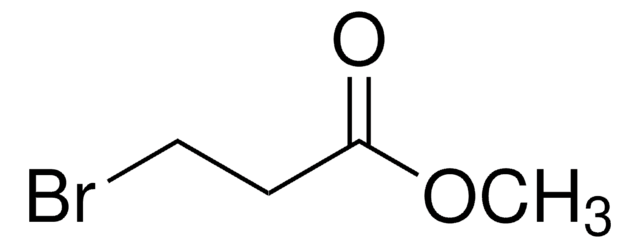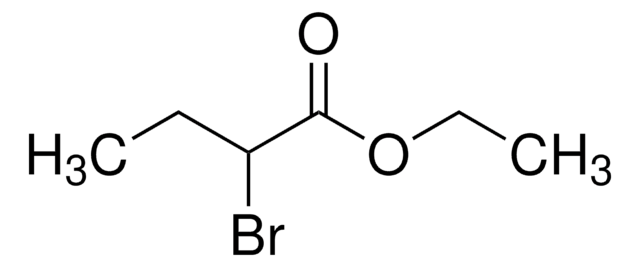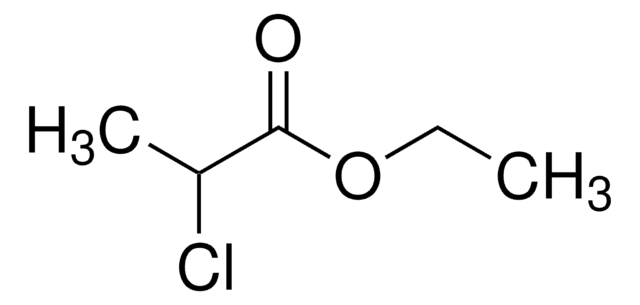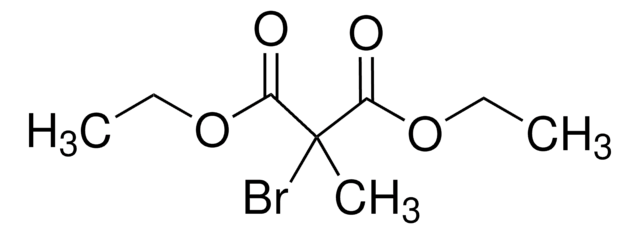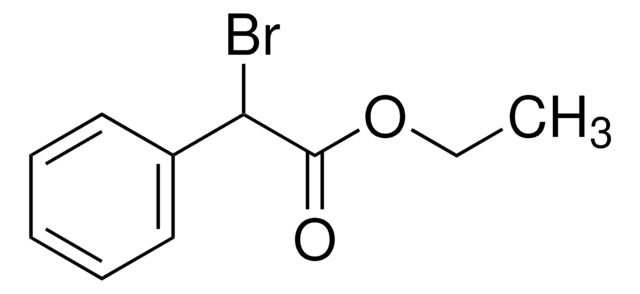167185
Methyl 2-bromopropionate
98%
Synonym(s):
(±)-2-Bromopropionic acid methyl ester, (±)-Methyl 2-bromopropionate, 2-Bromopropanoic acid methyl ester, 2-Bromopropionic acid methyl ester, Methyl (±)-α-bromopropionate
About This Item
Recommended Products
Quality Level
assay
98%
form
liquid
refractive index
n20/D 1.451 (lit.)
bp
51 °C/19 mmHg (lit.)
solubility
water: insoluble
density
1.497 g/mL at 25 °C (lit.)
functional group
bromo
ester
SMILES string
COC(=O)C(C)Br
InChI
1S/C4H7BrO2/c1-3(5)4(6)7-2/h3H,1-2H3
InChI key
ACEONLNNWKIPTM-UHFFFAOYSA-N
Looking for similar products? Visit Product Comparison Guide
Related Categories
Application
signalword
Danger
hcodes
Hazard Classifications
Eye Dam. 1 - Flam. Liq. 3 - Skin Corr. 1B - STOT SE 3
target_organs
Respiratory system
Storage Class
3 - Flammable liquids
wgk_germany
WGK 3
flash_point_f
125.6 °F - closed cup
flash_point_c
52 °C - closed cup
ppe
Faceshields, Gloves, Goggles, type ABEK (EN14387) respirator filter
Choose from one of the most recent versions:
Already Own This Product?
Find documentation for the products that you have recently purchased in the Document Library.
Customers Also Viewed
Global Trade Item Number
| SKU | GTIN |
|---|---|
| 167185-100G | 4061838749420 |
| 167185-25G | 4061838749437 |
| 167185-500G |
Our team of scientists has experience in all areas of research including Life Science, Material Science, Chemical Synthesis, Chromatography, Analytical and many others.
Contact Technical Service